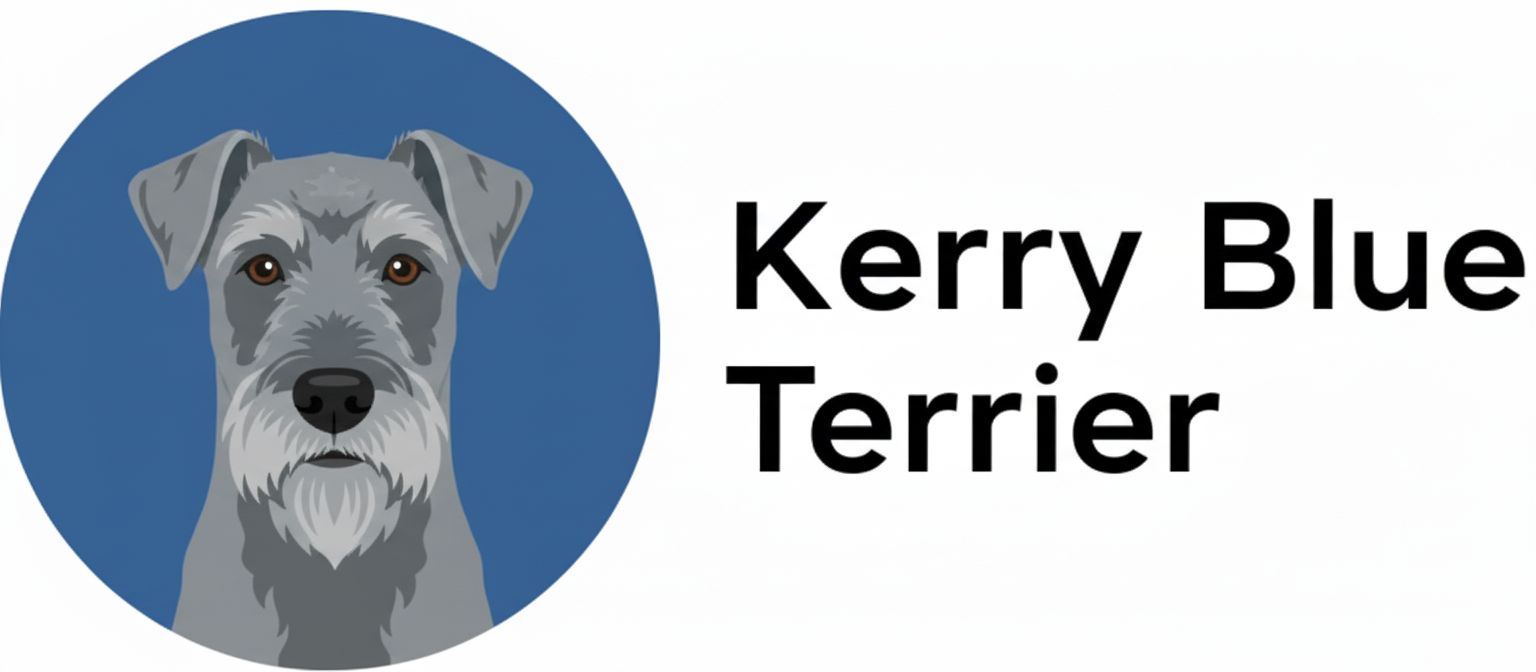Thinking about welcoming a Kerry Blue Terrier as your first canine companion? You’re considering one of Ireland’s most striking and intelligent breeds, but the decision requires careful evaluation of your lifestyle and commitment level.
A Kerry Blue Terrier can be a good first dog for prepared, active owners who commit to consistent training and daily exercise. However, their independent nature, high energy levels, and grooming requirements make them challenging for passive or inexperienced households.
According to recent breed studies, Kerry Blues require structured leadership and early socialization to thrive as family companions. Let’s explore what it really takes to make this charismatic terrier your perfect first dog.
Understanding the Kerry Blue Terrier Temperament
Kerry Blue Terriers possess a unique blend of loyalty and independence that defines their character. These intelligent dogs form strong bonds with their families and thrive on being included in daily activities.
The breed exhibits remarkable affection toward their human companions while maintaining a confident, sometimes stubborn streak. This combination creates both rewarding moments and training challenges for new owners.
Their terrier heritage brings natural alertness and protective instincts. Kerry Blues often serve as excellent watchdogs, alerting families to visitors or unusual sounds without excessive aggression. If you’re curious about their protective capabilities, you might wonder are Kerry Blue Terriers good guard dogs.
Key Personality Traits
- Intelligent and quick learners when properly motivated
- Loyal family companions who prefer being near their people
- Independent thinkers who may test boundaries
- Playful and energetic throughout their adult years
- Naturally protective without being overly aggressive
Exercise and Mental Stimulation Requirements
Kerry Blue Terriers demand substantial daily exercise and mental enrichment. These athletic dogs require more than a quick walk around the block to stay happy and well-behaved.
Plan for at least 60-90 minutes of physical activity daily, combining walks, play sessions, and interactive games. Without adequate exercise, Kerry Blues may develop destructive behaviors like excessive chewing or digging.
Mental stimulation proves equally important for this intelligent breed. Puzzle toys, training sessions, and new experiences keep their minds engaged and prevent boredom-related issues. For specific ideas to keep your Kerry Blue engaged, explore these Kerry Blue Terrier playtime activities.
Daily Exercise Breakdown
| Activity Type | Duration | Frequency | Benefits |
|---|---|---|---|
| Brisk walks | 30-45 minutes | Daily | Physical fitness, socialization |
| Play sessions | 15-20 minutes | 2-3 times daily | Bonding, energy release |
| Training practice | 10-15 minutes | Daily | Mental stimulation, obedience |
| Interactive games | 15-30 minutes | 3-4 times weekly | Problem-solving skills |
Training Challenges and Solutions for First-Time Owners
Training a Kerry Blue Terrier requires patience, consistency, and understanding of their independent nature. These dogs respond best to positive reinforcement methods rather than harsh corrections or repetitive drilling.
Their intelligence works both for and against new owners. Kerry Blues learn quickly but may choose when to obey commands based on their own assessment of the situation.
Early socialization becomes crucial for developing a well-rounded adult dog. Expose your Kerry Blue puppy to various people, animals, and environments during their critical socialization period. A quality training harness can make these learning sessions more effective and comfortable for both you and your dog.
How to Successfully Train Your Kerry Blue Terrier
- Start training immediately upon bringing your puppy home
- Use positive reinforcement with treats, praise, and play rewards
- Keep sessions short (5-10 minutes) but frequent throughout the day
- Establish clear boundaries and stick to them consistently
- Enroll in puppy classes for professional guidance and socialization
- Practice commands daily in different locations and situations
- Address behavioral issues immediately before they become habits
Is a Kerry Blue Terrier Right for Your Lifestyle?
Determining whether a Kerry Blue Terrier fits your household requires honest assessment of your time, energy, and experience level. These dogs thrive with active, engaged owners who enjoy interactive training and daily activities.
Consider your living situation carefully. While Kerry Blues can adapt to apartment living, they need adequate exercise regardless of home size. Urban owners must commit to multiple daily walks and regular trips to dog parks. For detailed insights about urban living with this breed, learn more about Kerry Blue Terrier apartment living.
Family dynamics also matter significantly. Kerry Blues generally do well with children when properly socialized, but their size and energy may overwhelm very young kids.
Ideal Kerry Blue Terrier Owner Profile
- Active lifestyle with time for daily exercise and training
- Patient approach to handling occasional stubbornness
- Consistent routine for feeding, exercise, and training
- Budget for grooming every 6-8 weeks professionally
- Commitment to socialization throughout the dog’s life
Grooming and Care Considerations
Kerry Blue Terriers require regular grooming maintenance that new owners must factor into their decision. Their distinctive wavy coat needs professional trimming every 6-8 weeks to maintain proper shape and health.
Daily brushing prevents matting and keeps their coat looking its best. A quality grooming brush designed for terrier coats makes this daily routine more effective and enjoyable for your dog. The good news is that Kerry Blues shed minimally, making them suitable for people with mild allergies.
Beyond coat care, routine health maintenance includes regular vet checkups, dental care, and nail trimming. Kerry Blues typically live 12-15 years with proper care.
Common Challenges for New Kerry Blue Terrier Owners
First-time Kerry Blue owners often struggle with specific behavioral challenges that experienced dog owners handle more easily. Understanding these potential issues helps you prepare appropriate responses.
Vocalization can become problematic if not addressed early. Kerry Blues may bark excessively when bored, anxious, or inadequately exercised. Proper training and sufficient stimulation usually resolve this issue.
Some Kerry Blues display dog-to-dog aggression, particularly with same-sex dogs. Early socialization and ongoing training help minimize this tendency, but owners must remain vigilant.
Warning Signs of Inadequate Preparation
- Expecting a calm, low-maintenance companion
- Limited time for daily training and exercise
- Inconsistent household routines
- Little patience for initial training challenges
- Unwillingness to invest in professional grooming
Successful Kerry Blue ownership requires realistic expectations and genuine commitment to meeting their needs. These dogs reward dedicated owners with years of loyal companionship and entertainment.
If you’re prepared for the challenges and excited about an active, intelligent companion, a Kerry Blue Terrier could become your perfect first dog. However, if you prefer a more laid-back breed or have limited time for training and exercise, consider other options that better match your lifestyle.
Frequently Asked Questions
Are Kerry Blue Terriers good with children?
Kerry Blue Terriers can be excellent with children when properly socialized from puppyhood. Their playful nature and loyalty make them great family companions, though their size and energy level may be overwhelming for toddlers. Supervision and training ensure positive interactions between dogs and children.
How much exercise does a Kerry Blue Terrier need daily?
Kerry Blue Terriers require 60-90 minutes of exercise daily, including walks, play sessions, and mental stimulation activities. Without adequate exercise, they may develop destructive behaviors like excessive chewing or digging. Active owners who enjoy outdoor activities make ideal companions for this energetic breed.
Do Kerry Blue Terriers shed a lot?
Kerry Blue Terriers shed very minimally due to their unique wavy coat texture. However, they require regular grooming including daily brushing and professional trimming every 6-8 weeks. Their low-shedding quality makes them suitable for people with mild allergies, though no dog is completely hypoallergenic.
Are Kerry Blue Terriers easy to train for beginners?
Kerry Blue Terriers are intelligent and capable learners but can be stubborn and independent, making them moderately challenging for first-time owners. They respond best to positive reinforcement training methods and require consistent, patient handling. Early socialization and professional training classes are highly recommended for new owners.
Can Kerry Blue Terriers live in apartments?
Kerry Blue Terriers can adapt to apartment living if their exercise and mental stimulation needs are met daily. Urban owners must commit to multiple walks, regular dog park visits, and indoor enrichment activities. Their moderate size makes them more suitable for apartments than larger breeds, provided they receive adequate exercise.
What health problems do Kerry Blue Terriers commonly have?
Kerry Blue Terriers are generally healthy dogs with a lifespan of 12-15 years. Common health concerns include hip dysplasia, eye problems, and cerebellar abiotrophy. Responsible breeding practices and regular veterinary care help minimize health risks. Choosing a reputable breeder who health tests their breeding dogs is essential.
How much does it cost to own a Kerry Blue Terrier?
Kerry Blue Terrier ownership costs include initial purchase price ($800-2000), regular grooming ($60-100 every 6-8 weeks), quality food, veterinary care, and training classes. Monthly expenses typically range from $100-200, not including initial setup costs for supplies and equipment. Professional grooming represents a significant ongoing expense for this breed.

